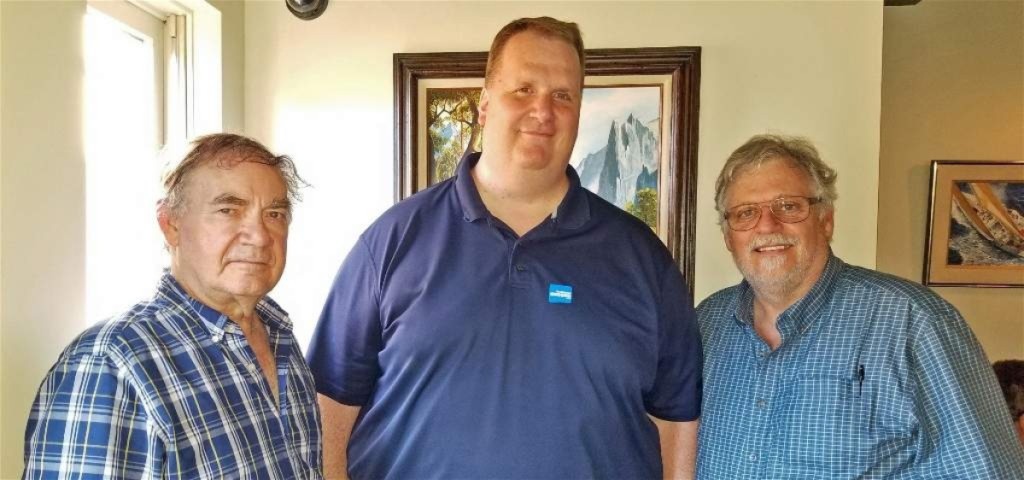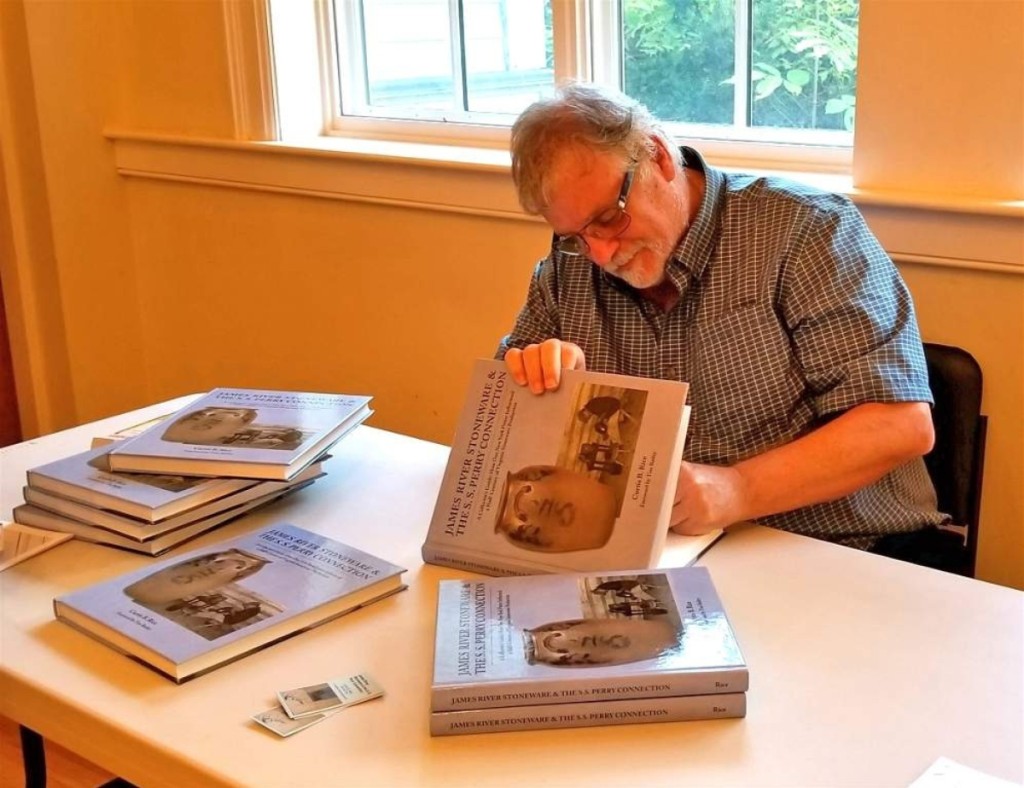BENNINGTON, VT. – On September 14, the Stoneware Collectors’ Group welcomed stoneware collectors from around the United States who had gathered at the Bennington Museum to learn new revelations about a little-known pottery in Troy, N.Y.
Tim Bailey, the owner of Antiques at Bailey’s in Nassau, N.Y., and Jude Hanley of Latham, N.Y., provided the group with recently discovered information about the stoneware made at the Troy factory during the tenure of Josiah Chapman in the first two decades of the Nineteenth Century. Chapman, a Quaker who apprenticed with a Philadelphia potter about 1795, came to work at the Troy factory shortly afterward.
Using stoneware sherds excavated at the Troy factory site by Hanley, including a rare piece marked with Chapman’s name, these amateur archeologists explained how they were able to trace Chapman’s style from the Troy factory to other marked pieces from potteries in the Albany/Troy area.
Bailey’s enthusiasm for his subject was contagious as he described how he and Hanley studied the shapes of the handles, the forms of jugs and jars and decorating techniques to identify stoneware made by Chapman not only in the Albany and Troy area but as far south as Cheesequake, N.J. Chapman’s style was simple and not overly decorated, in keeping with Quaker practice.
During the hour-and-a-half presentation, Bailey and Hanley also described how they used their years of studying stoneware made at New York’s Capital Region to determine that George Lent, a well-known potter from Lansingburgh, also worked for Chapman at the Troy factory.
Excavation of the Troy factory site has taken on an urgency because the pottery buildings are scheduled for demolition and whatever additional secrets the ground holds will soon be lost.
Following the lecture, Curtis Rice of Virginia was available to sign his new book James River Stoneware and the S. S. Perry Connection. Sanford S. Perry, a native of Whately, Mass., was a potter who worked in Troy before moving to Virginia in the early Nineteenth Century. Rice’s extensive research uncovered many Southern examples that illustrate how Perry’s style influenced stoneware production in Virginia’s Lower James River Valley for much of the Nineteenth Century.
The Stoneware Collectors’ Group meets two weekends a year, in May and September. Friday afternoon is dedicated to an informational lecture on a pottery-related topic of interest to the group. A stoneware sale takes place the following day at the Antique Center at Camelot Village in Bennington.
Next May’s lecture, given by Cathie Zusy and Warren Broderick at the Bennington Museum, will introduce some new information discovered by Zusy and Broderick about the multigenerational Norton pottery of Bennington. It will be preceded earlier in the afternoon by a field trip to various pottery and clay sites around Bennington.
For more information, contact Steve or Lorraine German at madriverantiques@aol.com or 860-653-5733.






